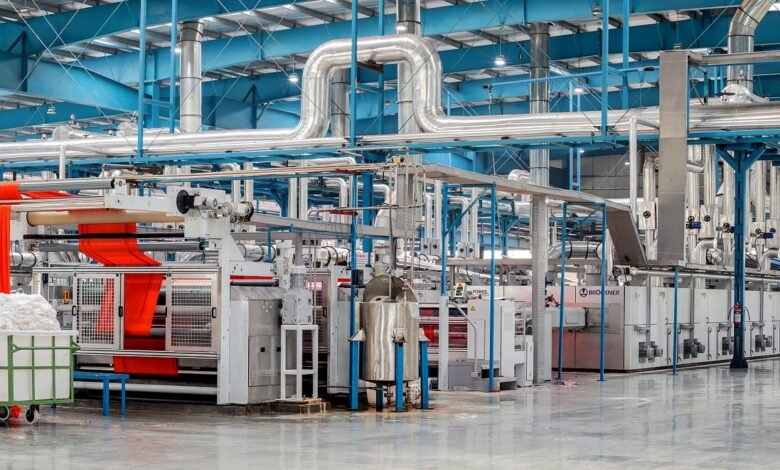Food Grade Heat Exchanger VS Conventional Solutions
Here's Why a Food Grade Heat Exchanger is Essential for Safe Processing

In the realm of food processing, the choice between a food-grade heat exchanger and conventional solutions is pivotal. This exploration delves into the comparative merits, revealing why the former stands as a guardian of quality in the delicate art of food production. As a leading food grade heat exchanger manufacturer, we prioritize safety and quality in food processing. Our state-of-the-art designs, using corrosion-resistant materials, ensure hygienic and efficient heat exchange. Trust us to deliver reliable solutions that meet the stringent standards of the food industry, safeguarding both your products and your reputation.
Understanding Food-Grade Heat Exchangers: A Hygienic Oasis
Hygiene Matters: The Core of Food-Grade Heat Exchangers
Food-grade heat exchangers prioritize hygiene with materials like stainless steel, meeting stringent standards for sanitary processing. Their design minimizes the risk of contamination, making them ideal for applications where product purity is paramount. This commitment to cleanliness sets them apart from their conventional counterparts.
Reducing Contamination Risks: The Design Advantage
In the battle against contamination, the design of food-grade heat exchangers proves crucial. With smooth, crevice-free surfaces and minimal joints, the risk of harboring bacteria is significantly reduced. Conventional solutions, often featuring more complex structures, may fall short of ensuring such meticulous cleanliness.
Performance Metrics: Efficiency and Beyond
Optimized Heat Transfer: The Efficiency Edge
Efficiency is a cornerstone of the food industry, and food-grade heat exchangers excel at optimized heat transfer. Their design allows for precise temperature control, ensuring product quality without compromising energy efficiency. Conventional solutions may struggle to match this delicate balance, impacting both quality and operational costs.
Flexible Adaptability: Meeting Varied Processing Needs
Food processing is diverse, requiring equipment that can adapt. Food-grade heat exchangers, designed with flexibility in mind, accommodate a wide range of processing needs. From gentle heating to rapid cooling, their versatility outshines conventional solutions, that may lack the adaptability demanded by modern food production.
No One Will Tell You This: Hidden Advantages of Food Grade Heat Exchangers
Corrosion Resistance: A Silent Guardian
Corrosion can compromise both performance and safety. Food-grade heat exchangers, often constructed with materials like corrosion-resistant stainless steel, silently guard against this threat. This advantage ensures longevity and sustained performance, a feature often underestimated in the broader discussion of heat exchanger selection.
Minimal Fouling: Sustaining Efficiency Over Time
Fouling, a common challenge in heat exchange is minimized by the design of food-grade heat exchangers. The smooth surfaces and precise engineering reduce the likelihood of deposits, ensuring consistent performance over time. Conventional solutions may grapple with fouling issues, leading to increased maintenance and decreased efficiency.
Operational Considerations: A Closer Look
Cleaning and Maintenance: Simplifying Operations
Efficient operations demand ease of cleaning and maintenance. Food-grade heat exchangers, designed with accessibility in mind, facilitate straightforward cleaning processes. The smooth surfaces and minimal joints make it easier to maintain the highest hygiene standards. In contrast, conventional solutions may pose challenges to achieving such operational simplicity.
Compliance with Standards: Meeting Regulatory Demands
Adhering to industry standards and regulations is non-negotiable in the food sector. Food-grade heat exchangers, constructed with compliance in mind, align seamlessly with these standards. Their hygienic design not only meets but often exceeds regulatory requirements, ensuring that food processing facilities stay in good standing with governing bodies.
Economic Considerations: Balancing Costs and Benefits
Initial Investment vs. Long-Term Value
While the initial investment in a food-grade heat exchanger may be higher, the long-term value is undeniable. Durability, efficiency, and minimized operational costs contribute to a favorable return on investment over time. Conventional solutions, though potentially less expensive upfront, may incur higher maintenance costs, impacting the overall economic equation.
Energy Efficiency: A Cost-Saving Advantage
The energy efficiency of food-grade heat exchangers extends beyond performance—it translates into cost savings. Precise temperature control and optimized heat transfer contribute to reduced energy consumption, aligning with both economic and environmental considerations. Conventional solutions may lag in this aspect, potentially incurring higher operational costs.
Environmental Impact: Sustainability in Focus
Green Engineering: The Environmental Footprint
As sustainability takes center stage, the environmental impact of equipment choices becomes critical. Food-grade heat exchangers, with their energy-efficient design and corrosion-resistant materials, align with green engineering principles. Their potential for waste heat recovery further underscores their role in sustainable food processing. Conventional solutions may fall short of meeting these environmental imperatives.
Sustainable Practices: A Holistic Approach
The choice between food-grade heat exchangers and conventional solutions extends beyond performance—it embodies a commitment to sustainable practices. By minimizing resource consumption, reducing waste, and aligning with eco-friendly principles, food-grade heat exchangers contribute to a holistic approach that resonates with the broader goals of responsible food production.
Conclusion: Elevating Food Safety and Quality
The Clear Choice for Quality Assurance
In the clash between food-grade heat exchangers and conventional solutions, the former emerges as the clear choice for quality assurance in food processing. Beyond the immediate advantages of hygiene, efficiency, and adaptability, it embodies a commitment to the highest standards of safety and quality. As the food industry navigates evolving challenges, the supremacy of food-grade heat exchangers stands as a beacon for those prioritizing excellence in their processes.



